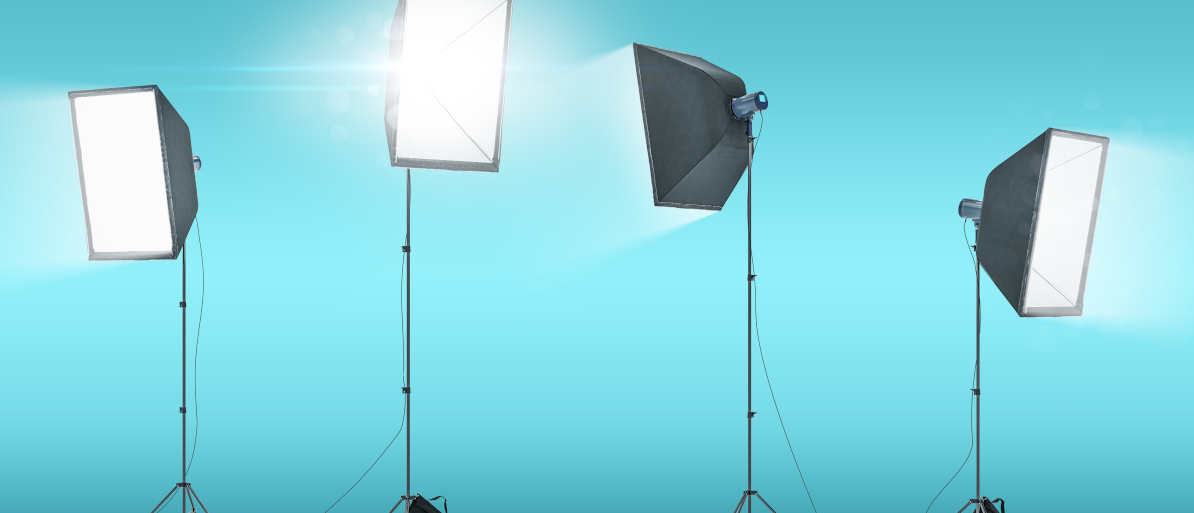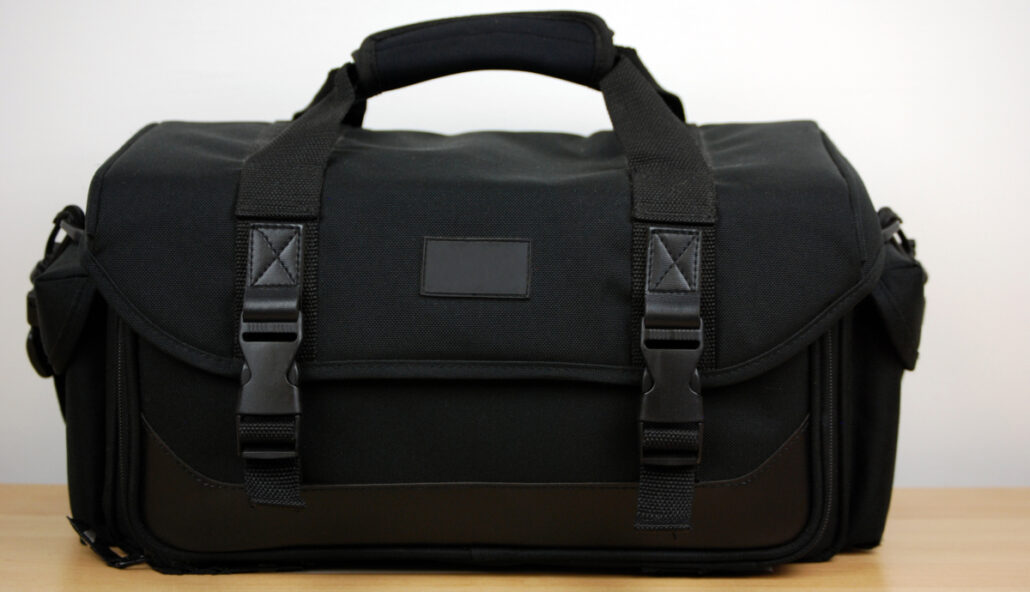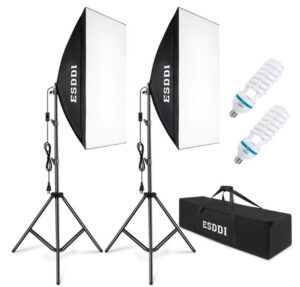Our content is reader supported, which means when you buy from links you click on, we may earn a commission.
Best Softbox Lighting for Video [5 Kits You Must Take a Look At]

Are you looking for the best softbox lighting for video?
In this guide, we’ll tell you everything you need to know about the different types of softboxes and discuss some factors to be aware of when choosing.
Here’s more on the best softbox lighting to help you light up your next video. Let’s go!
Why Use a Softbox for Video and Photography?
A softbox is a type of light modifier that is commonly used in photography and videography. It is typically shaped like a box, with a diffuser panel on one side and an opening on the other. The diffuser panel softens the light, while the opening allows light to pass through.
Softboxes are available in a variety of sizes, and they can be used with a variety of light sources, including studio lights, flashlights, and LED lights.
There are several benefits to using a softbox for video. These include that softboxes:
- Increase the light intensity and reduce shadows.
- Help to control glare and lens flare.
- Help to diffuse the light, which creates a more even illumination.
When to Use Softbox Lighting
There are a few different lighting techniques you can use when filming a video. One of the most popular is known as softbox lighting.
This involves using a special type of light source that diffuses the light, giving it a softer and more natural look. That’s why softbox lighting is often used in interviews or other situations where you want to create a warm and inviting atmosphere.
Characteristics of Softbox Lights
Softboxes are versatile and easy to set up. They provide even illumination across an entire room. Soft boxes are great for creating softer, more natural-looking images. Plus there are many different sizes and shapes depending on your needs.
Do you Need A Softbox?
Softboxes are great for still images and videos. If you’re just starting out in videography, a softbox is a good investment.
With over 3 billion internet users watching videos at least once per month worldwide in 2020 online video is only going to become more popular over time.
Softboxes create flattering, natural-looking light and can be used in a variety of different situations. If you’re looking to upgrade your lighting setup, a softbox is a great option. There are many different sizes and shapes available, so you can find one that’s perfect for your needs.
Pros of Softboxes
One benefit of softboxes is that they can be stored easily. This makes them the perfect video light if you don’t have a permanent studio setup.
Instead of keeping them up, you can assemble them when you need them and disassemble them when you don’t. The biggest con of softboxes is that they can be difficult to assemble and disassemble.

Here are several more pros of softboxes:
- A softbox gives off less heat than other types of lights.
- They are less likely to cause a lens flare.
- They’re very versatile and can be used almost anywhere.
- It is easy to find the right size and shape for your needs.
- They help create more flattering light.
- They give off very little glare and don’t cause any shadows.
- Softboxes are less likely to produce hot spots.
- They can be used with a variety of additional light sources.
What to Look for in Softbox Lights
When shopping for softbox lights, there are a few things you’ll want to keep in mind. They’re typically made of fabric or plastic, and come in different sizes, shapes, and materials.
When choosing between different brands, consider size, mobility, and price. A well-built softbox kit includes a sturdy stand and adjustable arms. Some softboxes come with adjustable arms. This allows you to change the angle of the light to get the perfect shot.
You will also ideally get a stand. The stand should be sturdy and well-built. A good quality stand will last for many years.
Portability
Softboxes are portable and lightweight. They can be easily carried from one location to another, making them ideal for on-the-go shoots.
Some softboxes can be difficult to set up. That’s why it’s important to find a softbox that is easy to assemble and disassemble. Portability is very important if you plan on shooting in multiple locations.
When choosing a softbox, think about how big you need it to be. Small studios usually don’t have enough room to accommodate a big softbox. Compact diffusers are ideal for small studios where there’s little space.
Light Quality
Light quality is important. Make sure your light is bright enough to illuminate the scene without blinding yourself.
Most softboxes are made of either fabric or plastic. Fabric softboxes are more durable and last longer than plastic ones. Diffusers matter too. They should allow light to spread evenly across the space where you plan to shoot your video
Recommended Softbox Lights
A softbox light should always be hung above your subject or background. Otherwise, it will create shadows. An adapter can help you mount your softbox light onto a boom arm. This allows you to move it around freely.
The following are some of the best softbox lights on the market:
1. LimoStudio Photography Softbox Light Lighting Kit
The LimoStudio Photography softbox lights are easy to set up and use and produce great results. The lights have a built-in reflector and diffuser, which helps to soften the light and reduce shadows. They also have an adjustable stand, which allows you to position them however you want.
These are square softboxes, so if you want to shoot anything wider than 16mm, you’ll need to find another solution. They’re designed for shooting videos and not still photos. This kit gives you enough light to cover a decent-sized area without having to spend too much money.
2. Fovitec SPK10-037 Softbox Lighting Kit
Fovitec is a popular brand name among photographers and videographers. The Fovitec SPK10-037 Softbox is a great product for anyone looking to diffuse light and create softer shadows. This kit includes three fluorescent softboxes that are dimmable and adjustable from 15 percent to 100%.
These lights include a socket connector, making installation quick and simple. The kit also includes light stands, bulbs, and a carrying case. I have this set and it’s pretty easy to take down and set up, plus they add a lot of light to the area you’re filming.
3. Neewer 700W 24-inch Softbox Lighting Kit
Neewer 700W 24-inch softbox lighting kit is a professional photography lighting kit that includes three light stands, two softboxes, one carrying case, and one power cord. This kit includes two 600-watt lights and two honeycomb grids.
The softboxes included in this set are designed to give you natural-looking highlights. The light stands are adjustable from 2.1 feet to 6.6 feet, making them suitable for a variety of shooting situations. The kit is made out of durable materials that will withstand daily wear and tear.
4. RALENO Softbox Photography Lighting Kit
The RALENO softbox photography lighting kit is a great way to improve your photography skills. It is easy to set up and use, and it creates a beautiful, soft light that makes your photos look amazing. The kit includes a softbox, a stand, and an adapter, so you can start using it right away. It is great for those who don’t want to spend too much money on their lighting gear.
5. Esddi Softbox Lighting Kit
The Esddi softbox lighting kit comes with a softbox, light stand, and LED light with a diffuser built in. This kit includes two continuous lighting softboxes, three color cotton backdrops, two lighting umbrellas, and an adjustable steel stand.
The light stand is adjustable, so you can control the height and direction of the light. A waterproof bag is included to protect the equipment during transportation and storage.
Softbox Lighting FAQs
Which to choose: softbox vs umbrella?
Softboxes provide a more controlled light, which can be helpful when trying to minimize shadows. An umbrella creates a diffused light source that spreads out evenly over a large area. Reflective umbrellas have an open face pointing toward the area you wish to highlight. An umbrella is cheaper than a softbox and easier to transport.
If you’re looking for a more natural look, an umbrella may be the way to go. If you need a more focused light, a softbox may be a better option.
What size of softbox should I get?
The size of your softbox will affect the quality of light that it produces. A small softbox will produce a more focused beam of light, while a large softbox will produce a softer, more diffused light. In addition, smaller softboxes give softer shadows, while bigger ones give sharper shadows.
Matching the size of the softbox to the size of your subject gives the most flattering look. If you’re shooting a small object, you’ll need a smaller softbox in order to avoid washing out the details. Conversely, if your video shoot consists of a larger object or group of people, you’ll need a larger softbox to evenly illuminate your subject.
As a rule of thumb, a 20-24 inch softbox will work well for most close-ups. A 50+ inch softbox would be ideal for long shots.
What is the best lighting for indoor video?
Many people believe that natural light is the best lighting for indoor video. While it is true that natural light can be very flattering, it is not always practical to rely on it.
Sunlight can be very harsh, and it can be difficult to control the amount of light that enters a room. As a result, many videographers prefer to use artificial lighting. Artificial lighting gives you more control over the look of your video, and it can be less expensive than natural light in the long run.
When choosing artificial lighting, it is important to consider both the quality and the quantity of light. Too much light can wash out the colors in your video, while too little light can make it difficult to see details. The best lighting for indoor video is typically a soft, diffused light that evenly illuminates the entire room.
What is the best lighting for a video call?
There are a few things to consider when it comes to choosing the best lighting for a video call. You’ll want to make sure that the light is not too bright or too dim. You don’t want your face to be obscured by shadows, but you also don’t want to be blinded by a bright light. You’ll also want to pay attention to the direction of the light. Ideally, the light should be coming from in front of you so that your face is well-lit. Lastly, you’ll want to experiment with different light sources to see what works best for you. You might try using a lamp, natural light from a window, or even a small LED light.
How do you use 3-point lighting in a video?
If you’re lighting a video, you’ll want to use 3-point lighting. This will give your subject some definition and make them pop on the screen. To set up 3-point lighting, you’ll need three lights: one key light, one fill light, and one backlight.
The key light is the brightest light and should be placed in front of your subject, slightly off to the side. The fill light is dimmer and is used to fill in any shadows cast by the key light. It should be placed on the opposite side of the key light, pointing at your subject from an angle. The backlight is the third and final light. It’s placed behind your subject and is used to create a halo effect or to separate them from the background.
When setting up your lights, remember that the key light is the most important, so start with that one first. Then add in the fill light and backlight until you’re happy with the look of your video.
Wrapping Up
No matter what type of videos you’re creating a softbox is a great way to create flattering, natural-looking light.
Now that you know all about the different types of softboxes and what situations they’re best for, it’s time to put your knowledge into practice.
Get out there and start creating some amazing video content! Experiment with different setups and see which one works best for you.




